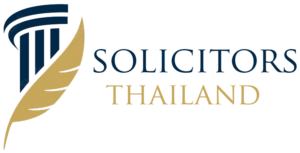Thailand income tax system is straightforward in design but recently more complex in practice: progressive personal rates, a corporate rate with SME tiers, new rules on foreign-sourced income and expanding compliance obligations (transfer-pricing, reporting and international minimum-tax rules). Below I map what actually matters for individuals and companies operating in or from Thailand, the precise mechanics you must watch, and the compliance steps that commonly trip people up.
Snapshot: who pays what (the quick map)
-
Residents (present in Thailand ≥180 days in a calendar year) are subject to tax on Thai-sourced income and — since 1 January 2024 — on foreign-sourced income when it is remitted into Thailand (with ongoing proposals to alter timing).
-
Non-residents are taxed only on Thai-sourced income; certain non-resident receipts may be subject to final withholding at flat rates.
-
Corporate tax: the headline domestic corporate rate remains around 20% with lower SME bands for small profits; Thailand is also implementing the OECD-led 15% global minimum tax rules for large multinationals.
Personal income tax — rates and allowances (exact numbers)
Personal taxable income is calculated on a calendar-year basis and taxed progressively. The current brackets run from exempt (0–THB150,000) up to 35% (over THB5,000,000) — with intermediate bands at 5%, 10%, 15%, 20%, 25% and 30%.
Key standard allowances and common deductions used in practice: a personal allowance of THB60,000, spouse allowance THB60,000 (if spouse has no income), child allowance THB30,000 (additional rules for children born from 2018), parental-care allowance THB30,000 per parent (subject to income limits), plus life/health/pension and other itemized deductions within statutory caps. These allowances make a material difference to effective rates for middle-income taxpayers.
Taxation of foreign-sourced income — the practical change
From 1 January 2024, Thai tax law treats foreign-sourced income earned in the tax year as taxable when it is remitted into Thailand if you are a tax resident (≥180 days). That change shifted Thailand closer to a remittance-based global income regime and is the principal risk area for long-stay expats, consultants paid from overseas and cross-border investors. The Revenue Department and advisers have since discussed limited relief windows (e.g., temporary “remit within one or two years” safe-harbours) — these proposals matter but the baseline rule to plan around is: residents → foreign income taxed on remittance.
Practical effect: keep tight contemporaneous records of when foreign income was earned vs when it was transferred into Thailand, plus foreign tax paid documentation to claim treaty relief where available.
Corporate tax and base rules
Thailand’s standard corporate income tax (CIT) for companies is applied to net profits; smaller businesses benefit from stepped/SME bands (preferential rates on the first tranche of profit depending on the company size and policy year). Companies must file an annual return and pay final CIT within 150 days after the close of their accounting period; an interim (half-year) filing/payment is also required. In addition, Thailand will apply a 15% top-up global minimum tax to qualifying multinational enterprise groups meeting the revenue threshold under the OECD rules.
Withholding tax, capital gains and other taxable heads
Withholding tax (WHT) is central in Thailand: common rates include dividends 10%, interest/royalties and many service payments 15% (subject to variation) and special rules for salaries and contractor payments (payroll withholding on progressive scale). Treaties commonly reduce these WHT rates. Capital gains are generally treated as assessable income (i.e., taxed as part of your income) though sales on the SET and certain fund instruments are specifically excluded or treated differently — so how you sell matters.
Transfer pricing, documentation and reporting
Thailand’s TP regime follows OECD principles. Companies with related-party cross-border transactions and annual revenue above THB200 million must file a transfer-pricing disclosure form with the CIT return and maintain master/local files (Thai language) on request. Failure to comply can trigger fines (commonly up to THB200,000) and aggressive primary and secondary adjustments plus heavy additional penalties. Plan TP benchmarking and documentation before an audit.
Filing calendar, payments and penalties — what to calendar
-
Individual returns: paper filing is usually due 31 March (following year); e-filing enjoys a short extension (early-April dates vary by year).
-
Companies: annual CIT return due 150 days after fiscal year-end; half-year provisional payments required.
-
Penalties/interest: the Revenue Department commonly charges 1.5% per month on overdue tax and fixed-sum fines (e.g., up to THB2,000 for late individual filing), while under-reporting or evasion can attract much larger penalties (including percentages of tax shortfall and criminal exposure in severe cases).
Payroll and social insurance
Employers must withhold employee PIT at source and register employees with the Social Security Office. Standard SSO contributions are 5% employee / 5% employer, capped at a wage base of THB15,000 (i.e., max THB750 each), with occasional temporary reductions in exceptional periods; expect monthly social-security remittances and separate workmen’s-comp/other levies.
Practical compliance checklist (what to do now)
-
Establish residency exposure: track days in Thailand (≥180 days changes your tax base).
-
Document foreign income timing: ledger when earned, when remitted, and foreign tax paid — these records are the determinative evidence.
-
Build TP documentation if group revenue approaches THB200m and pre-populate the disclosure form for your annual CIT filing.
-
Calendar deadlines (individual: 31 March/early-April e-file; corporate: 150 days after fiscal year-end) and plan mid-year payments.
-
Run WHT and payroll processes: withhold correctly, remit on time and maintain proof to avoid 1.5% monthly interest stacks.
Closing practical note
Thailand’s tax landscape has become more internationally connected: the remittance rule for foreign income and global minimum tax for multinationals mean cross-border timing, documentation and treaty planning are now first-order issues. The single best practical move is good recordkeeping (earnings vs remittance dates), proactive TP documentation and a clear filing calendar — these three things materially reduce audit friction and avoid the common traps that lead to interest and penalties.

